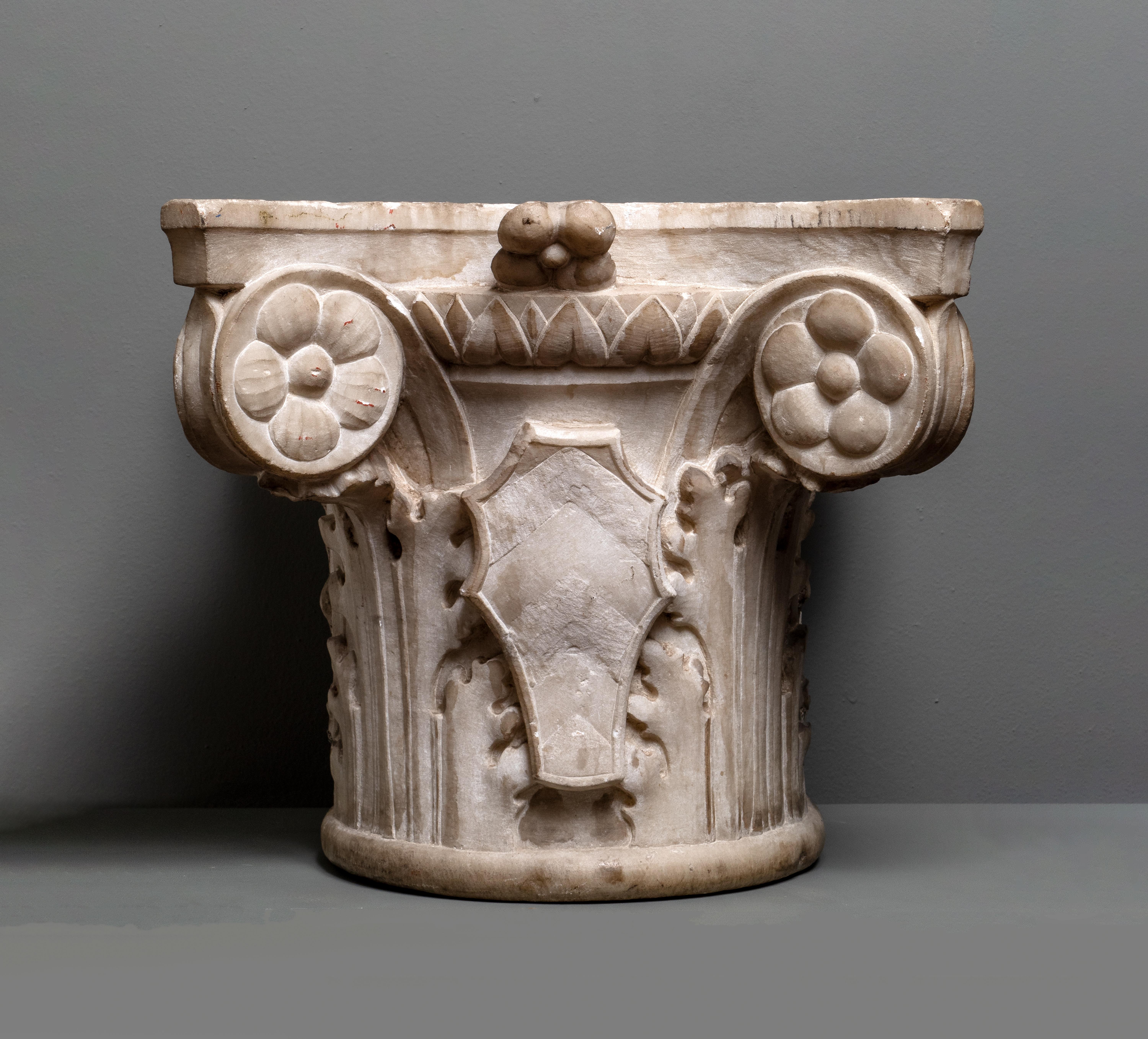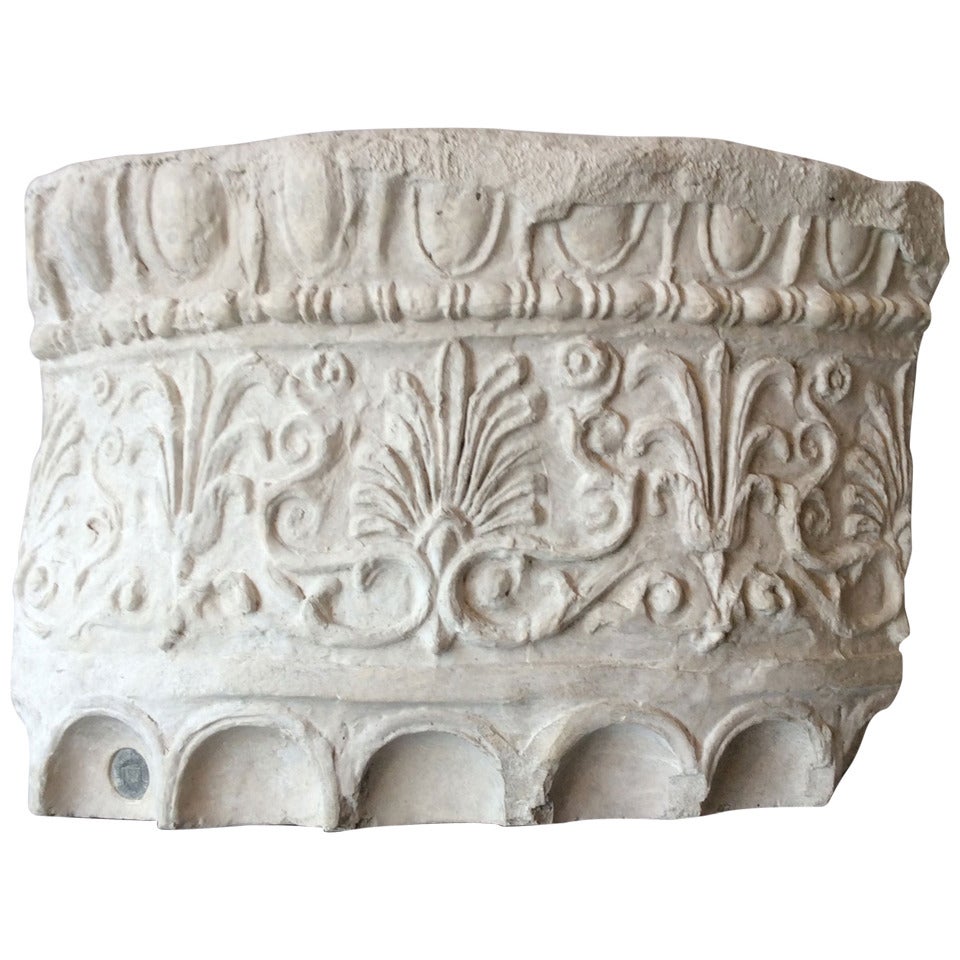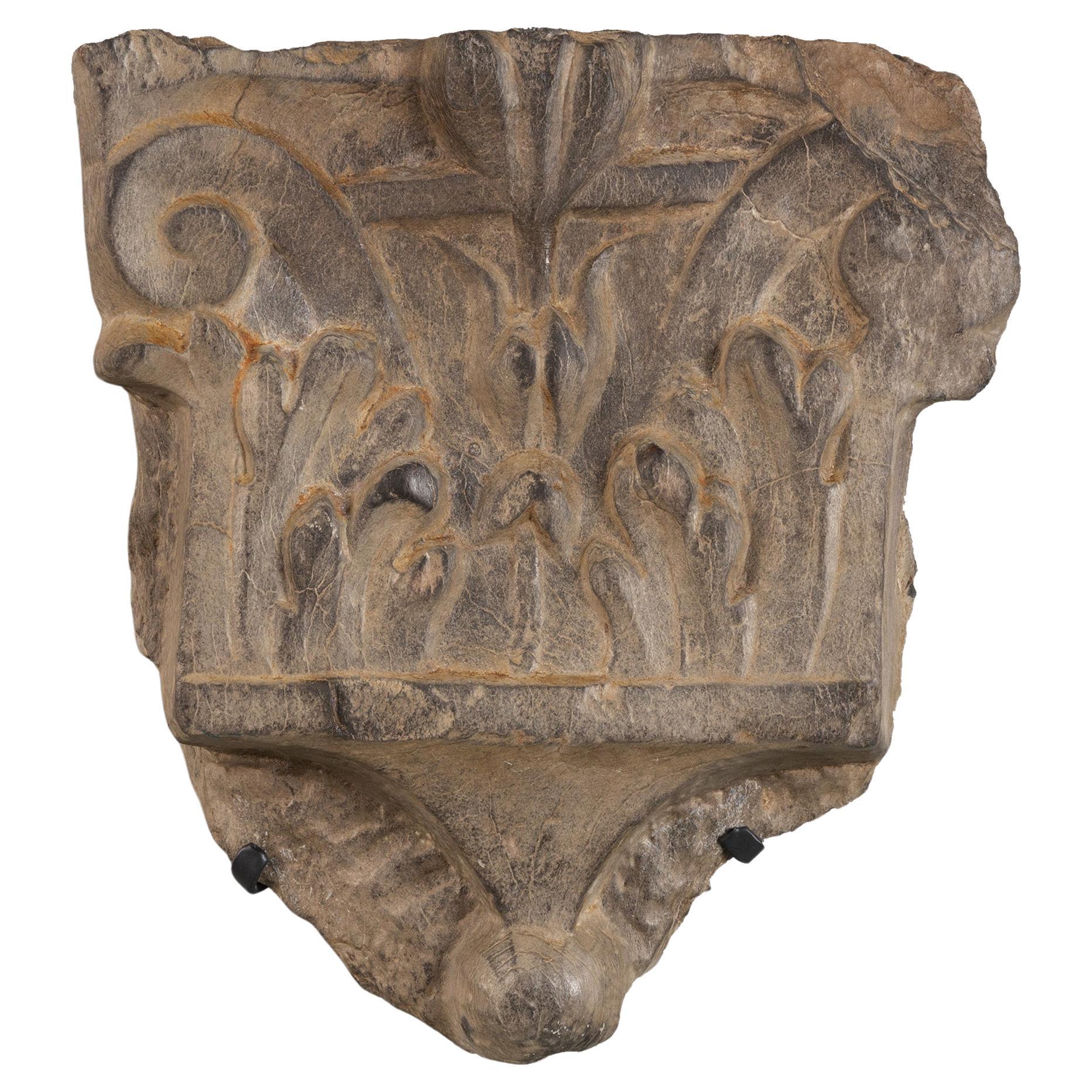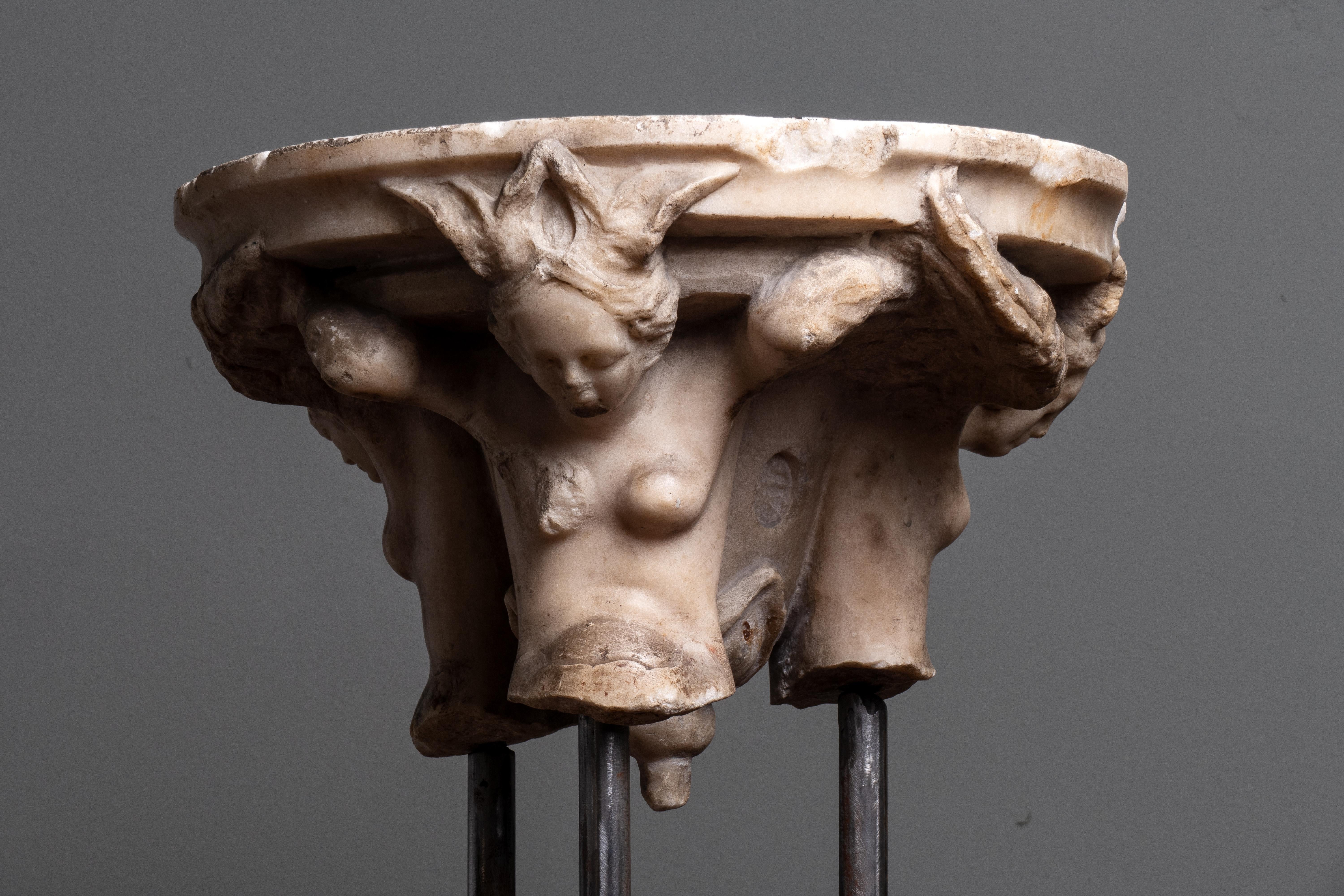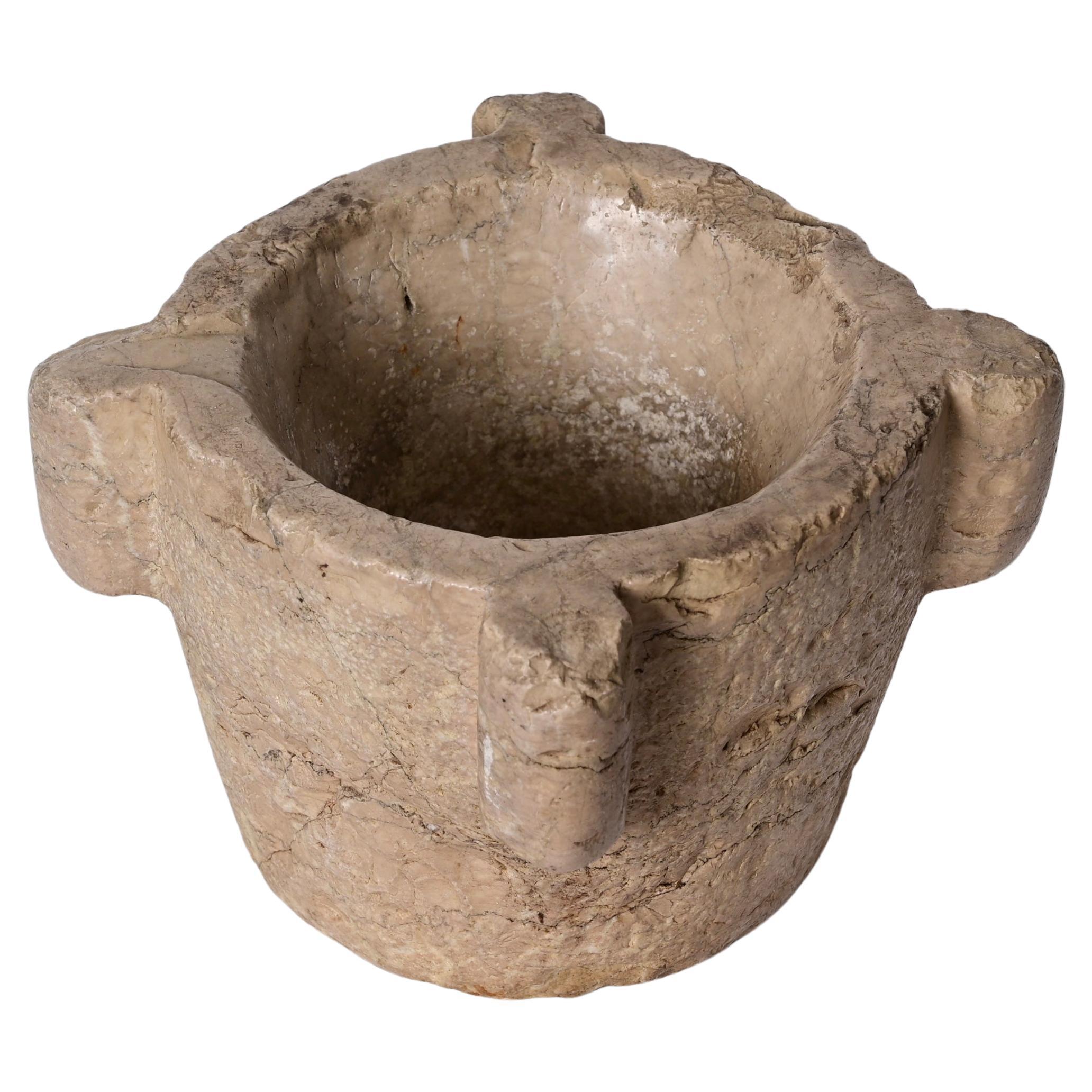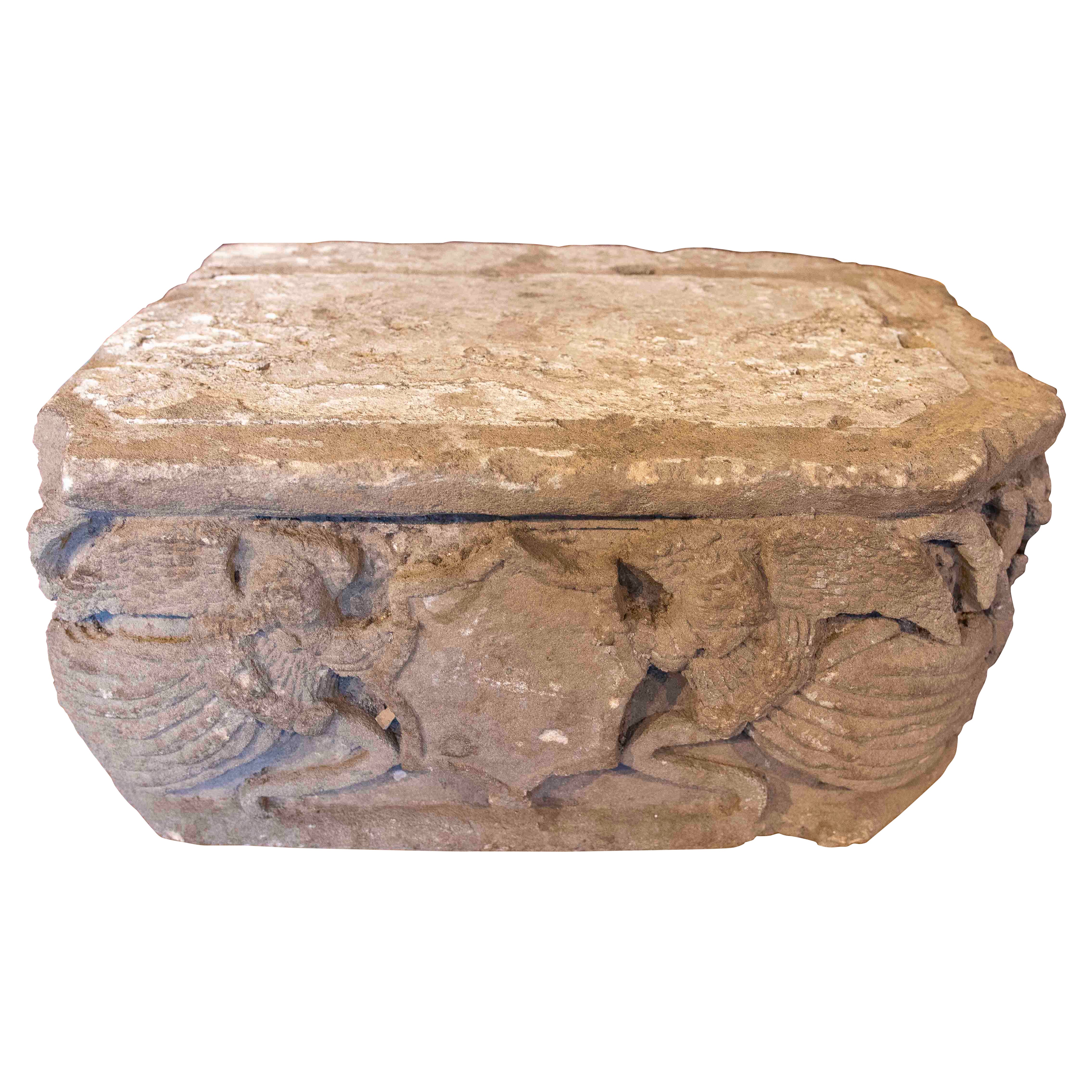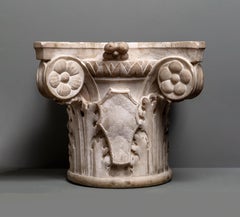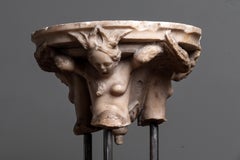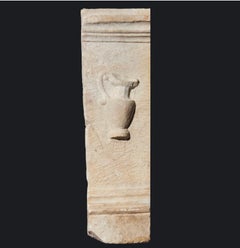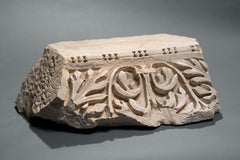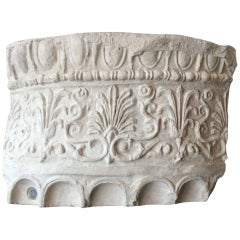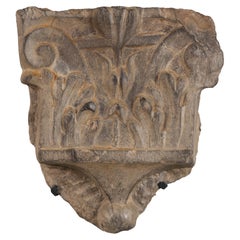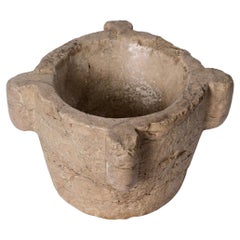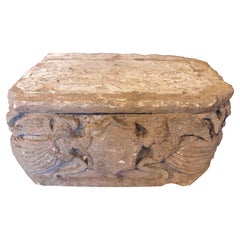Items Similar to 14th Century Italian Marble Mortar with Animals depicted on the sides
Want more images or videos?
Request additional images or videos from the seller
1 of 4
Unknown14th Century Italian Marble Mortar with Animals depicted on the sidesItaly, 14th Century
Italy, 14th Century
$8,892.34
£6,636.30
€7,500
CA$12,415.47
A$13,541.22
CHF 7,119.42
MX$163,804.12
NOK 88,841.48
SEK 83,946.76
DKK 57,112.99
About the Item
Unusual 14th Century Italian marble mortar with animals depicted on the sides
- Creation Year:Italy, 14th Century
- Dimensions:Height: 6.7 in (17 cm)Width: 7.49 in (19 cm)Depth: 7.49 in (19 cm)
- Medium:
- Period:
- Condition:
- Gallery Location:Milan, IT
- Reference Number:1stDibs: LU154429984222
About the Seller
5.0
Vetted Professional Seller
Every seller passes strict standards for authenticity and reliability
Established in 2020
1stDibs seller since 2021
8 sales on 1stDibs
- ShippingRetrieving quote...Shipping from: Milan, Italy
- Return Policy
Authenticity Guarantee
In the unlikely event there’s an issue with an item’s authenticity, contact us within 1 year for a full refund. DetailsMoney-Back Guarantee
If your item is not as described, is damaged in transit, or does not arrive, contact us within 7 days for a full refund. Details24-Hour Cancellation
You have a 24-hour grace period in which to reconsider your purchase, with no questions asked.Vetted Professional Sellers
Our world-class sellers must adhere to strict standards for service and quality, maintaining the integrity of our listings.Price-Match Guarantee
If you find that a seller listed the same item for a lower price elsewhere, we’ll match it.Trusted Global Delivery
Our best-in-class carrier network provides specialized shipping options worldwide, including custom delivery.More From This Seller
View AllLARGE ITALIAN RENAISSANCE MARBLE CAPITAL, 15th/16th Century
Located in Milan, IT
LARGE ITALIAN RENAISSANCE MARBLE CAPITAL
Florence, 15th/16th Century
marble
38 x 47 x 47 cm
15 x 18 1/2 x 18 1/2 in
Category
16th Century Figurative Sculptures
Materials
Marble
ITALIAN RENAISSANCE CAPITAL WITH MYTHOLOGICAL FIGURES, 15th Century
Located in Milan, IT
ITALIAN RENAISSANCE CAPITAL WITH MYTHOLOGICAL FIGURES, 15th Century
marble
H 18 x Diam 33.5 cm
H 7 x Diam 13 1/4 in
Category
15th Century and Earlier More Art
Materials
Marble
ANCIENT ROMAN MARBLE ALTAR FRAGMENT, 1ST/2ND CENTURY A.D.
Located in Milan, IT
Roman Marble Altar fragment from the 1st/2nd Century A.D. with the typical element of Roman rituals.
Provenance: Nicolas Koutoulakis (1910-1996), Paris...
Category
15th Century and Earlier Figurative Sculptures
Materials
Marble
ANCIENT MARBLE RELIEF ACHANTUS LEAVES "PULVINO" ROMAN EMPIRE 2ND CENTURY AD
Located in Milan, IT
PROVENANCE
Private J.E. Collection, Bavaria, 1960s
Category
15th Century and Earlier Still-life Sculptures
Materials
Marble
WHITE MARBLE CANDELABRUM SHAFT AFTER THE ANTIQUE, 19TH CENTURY
Located in Milan, IT
19th century sculpture depicting a roman carved-marble candelabrum shaft richly decorate with leaf motive. In excellent condition, this fine sculptures measures 26 cm in width and sh...
Category
19th Century More Art
Materials
Marble
ANTIQUE ITALIAN ARCHITECTURAL FRAGMENT OF PLINTH IN 'BRECCIA MEDICEA' MARBLE
Located in Milan, IT
BRECCIA FRAGMENT PLINTH
Italy, 18th Century
Breccia medicea
55 x d 25 cm
21 3/4 x d 9 3/4 in
Category
18th Century More Art
Materials
Marble
You May Also Like
Part of Tuscan Capital in Plaster
Located in Paris, FR
Part of Tuscan capital, with workshop stamp in bronze. Beautiful and rare collection of plaster casts, models from a school of fine arts, late 1...
Category
Antique 19th Century French Sculptures
Materials
Plaster
16th Century Ligurian Stone Half-Capital
Located in London, GB
A rare 16th Century Italian stone Corinthian half-capital, carved in Ligurian slate, mounted on a simple wrought iron bracket for wall hanging.
Category
Antique 16th Century Italian Renaissance Wall-mounted Sculptures
Materials
Slate, Iron
Antique Medieval Tuscan Mortar in Nembro Marble, Italy
Located in Roma, IT
Incredilbe apothecary Mortar in Nembro Marble, made from a single block of marble and dated back to the early 600 from Tuscany. It was used in the in apothecaries to grind herbs and spices into powder for food or medicine.
Very unique and rare piece in great conditions considering the the period to which it dates.
This highly sculptural and unique piece would be suitable today as a magnificent decoration on a table or mantle, or to grace the counter of an open kitchen...
Category
Antique Early 18th Century Italian Medieval Vases
Materials
Marble
$1,517 Sale Price
20% Off
1750s Ancient Architectural Fragment Carved in Stone with Mythological Motifs
Located in Marbella, ES
An impressive ancient architectural fragment made of stone, richly carved with mythological and ornamental figures. The piece retains a strong sculptural feel, with reliefs displayin...
Category
Antique 18th Century Spanish Architectural Elements
Materials
Stone
Italian Ancient Marble Sculpture Fountain, Late 16th Century
Located in Milano, IT
Sea monster
Carrara marble mouth fountain
Italy, late 16th century
It measures 13.8 x 31.5 x 18.9 in (35 x 80 x 48 cm)
State of conservation: some small evident gaps and widespread signs of wear due to outdoor exposure. The gray marks crossing it do not come from restoration, but are rather the natural veins of the marble.
This work has some morphological characteristics typically associated with the iconography of the sea monster: an elongated muzzle, sharp teeth, protruding eyes, elongated ears, and a coiled serpent's tail.
An in-depth series of studies on artistic depictions of the sea monster attempted to verify how this symbol evolved in antiquity in the European and Mediterranean contexts and how it gradually changed its image and function over time. The iconography itself is mutable and imaginative and its history is rich with cultural and artistic exchange, as well as the overlapping of ideas. This occurred so much that it is difficult to accurately pinpoint the "types" that satisfactorily represent its various developments.
However, we can try to summarize the main figures, starting from the biblical Leviathan and the marine creature that swallowed Jonah (in the Christian version, this figure was to become a whale or a "big fish", the “ketos mega”, translation of the Hebrew “dag gadol”). Other specimens ranged from the dragons mentioned in the Iliad (which were winged and had legs) to "ketos” (also from Greek mythology), the terrifying being from whose Latinized name (“cetus”) derives the word "cetacean". See J. Boardman, “Very Like a Whale” - Classical Sea Monsters, in Monsters and Demons in the Ancient and Medieval Worlds, in Papers presented in Honor of Edith Porada, Mainz am Rhein 1987, pp. 73-84).
In Italy the monster underwent yet further variations: it can be found in Etruscan art on the front of some sarcophagi representing the companion of souls, while among the Romans we find the “Pistrice” (cited by Plinio in Naturalis Historia PLIN., Nat., II 9, 8 and by Virgilio in Eneide: VERG., Aen., III, 427), which appeared in the shape of a stylized hippocampus or a very large monstrous cetacean and evolved into a hideous being with a dragon's head and long webbed fins.
During the Middle Ages, the sea monster was the object of new transformations: at this time, it is often winged, the head is stretched like a crocodile, the front legs are often very sharp fins - sometimes real paws - until the image merges with dragons, the typical figures of medieval visionary spirituality widely found throughout Europe (on this topic and much more, see: Baltrušaitis, J., Il Medioevo fantastico. Antichità ed esotismi nell’arte gotica, Gli Adelphi 1997).
In Italy during the 15th and 16th centuries, the revival of classicism - representative of the humanistic and Renaissance periods - led to a different reading of these "creatures". Indeed, the sea monster was also to find widespread use as an isolated decorative motif, especially in numerous fountains and sculptures where dolphins or sea monsters were used as a characterizing element linked to water (on this theme see: Chet Van Duzer, Sea Monsters on Medieval and Renaissance Maps, London, The British library, 2013).
From the morphological point of view, the "sea monsters" of this period are mostly depicted as hybrid figures, in which the body of a mythological or real being (a hippocampus, a sea snake, a dolphin), is joined to a head with a rather indistinct appearance. It was usually characterized by large upright ears, an elongated snout, sharp teeth and globular, protruding eyes; a complex and indefinite figure, both from the symbolic point of view and from that of its genesis.
The work we are examining is placed as a cross between the medieval sea serpent and the Renaissance dolphin, with stylistic features which recall the snake as often used in heraldry (such as the "snake" depicted in the coat of arms of the Visconti - the lords and then dukes of Milan between 1277 and 1447 - and which, for some, may be derived from the representations of the “Pistrice” that swallowed Jonah).
In the search for sources, Renaissance cartography and in particular woodcuts should not be neglected. See for example the monsters of Olaus Magnus, from the editions of the “Historia de gentibus septentrionalibus” (“History of the peoples of the north”) and the natural histories of Conrad Gesner, Ulisse...
Category
Antique 16th Century Italian Renaissance Animal Sculptures
Materials
Carrara Marble
Rare English Romanesque Limestone Capital on Stand
Located in Wormelow, Herefordshire
This weathered English Romanesque limestone capital is centuries old, dating from the Norman era of the 11th and 12th centuries. Originating from Oxf...
Category
Antique 15th Century and Earlier English Medieval Mounted Objects
Materials
Stone, Limestone
